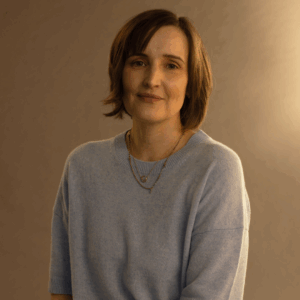The latest thriller to hit ITV is Code of Silence, a compelling six-part drama from creator Catherine Moulton. Drawing on real-life experiences of hearing loss and lip-reading, the series is both emotionally powerful and intensely gripping.
Leading the drama is Rose Ayling-Ellis, who portrays the role of Alison Brooks, a smart and determined Deaf woman whose lip-reading skills are harnessed in a covert operation involving a gang who are plotting a high-stake heist. Weaving in elements of her own experiences with lip-reading, Rose brings Alison’s Deaf experience to life.
Liam, who leads the gang in hacking computers, is played by Kieron Moore. Like Alison, Liam is an outsider who has grown up pin-balling between foster homes. This way of life has led Liam to believe that in life you have to take it yourself, nothing is handed to you on a plate. As the thriller continues, Alison has to decide whether she will pursue her attraction to Liam or whether her loyalties lie with the Police, the safer option between the two.
In the words of series writer Catherine Moulton, “Code of Silence puts a Deaf woman at the heart of a suspenseful thriller about divided loyalties, love and temptation”.
To find out more about the show, we reached out to Catherine Moulton:
- How did your own experience with hearing loss shape the story of Code of Silence?
I have been partially deaf since childhood, and I learned to lip read instinctively. I didn’t know I was lip reading at first. I just knew I had to focus on lips and faces to keep up. Many years later, I had lip reading lessons and it was only then that I fully understood the work that lip readers do. It’s estimated that only 30-40% of speech sounds can be lip read even in ideal situations. The rest comes from context. Lip reading is complicated guesswork, piecing together of clues. The visible shapes on the lips, the rhythm of speech, body language, what you know about the person speaking and the situation.
- How important was it to have Rose Ayling-Ellis, a Deaf woman bring Alison to life?
It was hugely important to me that Alison was played by a Deaf actress. I had been following Rose’s career, watching her in Eastenders and voting for her on Strictly. We approached Rose very early in the development process before I had written a script. We approached Rose very early in the development process before I had written a script. It was a huge help to know that I was writing the character for Rose. It also meant that Rose was able to contribute ideas at an early stage and we could incorporate elements of her experience, along with my own, into the scripts.
- What do you hope Code of Silence contributes to the conversations around accessibility and inclusion in the media?
I hope it shows that stories about Deaf/disabled characters can be entertaining and appeal to a mainstream audience. But, just as important, is the fact that we put inclusivity first when we were making the show. Rose and I are both executive producers on the show. One of the other exec producers Bryony Arnold, a wheelchair user, led the charge on making our set and working practices as accessible as possible. We had Deaf, Disabled and Neurodiverse crew working at every level on the show and I believe the show was stronger as a result.
Here at Signature, we would like to thank Catherine for sharing more about Code of Silence. The series is more than just a gripping thriller, it’s a ground-breaking step forward for representation and inclusion in mainstream media. With, Rose, a Deaf woman leading the narrative and weaving real-life experiences into the story, the series offers a nuanced portrayal of identity and agency. Catherine, alongside Rose have created a show that not only entertains but also challenges assumptions, showcasing the power of inclusive storytelling both on screen and behind the scenes.

